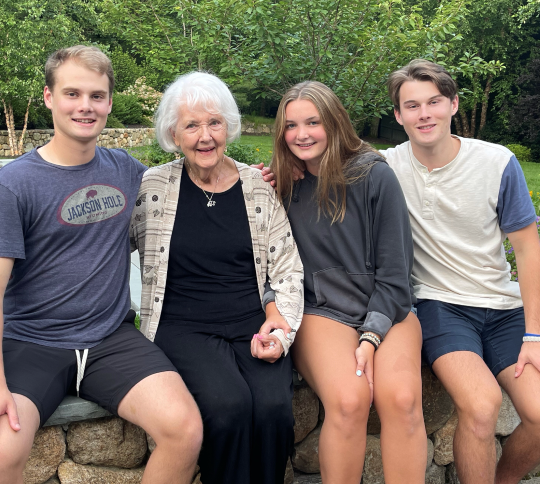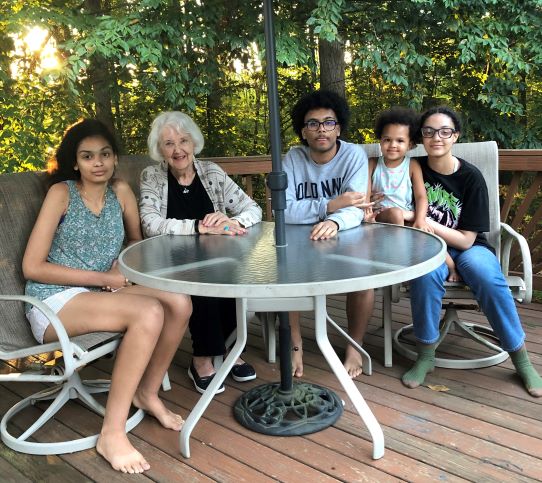One of my takeaways from Ignatian spirituality is the value of pilgrimage. My first real encounter with pilgrimage was in May, 1997 when the Loyola staff made a pilgrimage to the Ignatian holy places in Spain. That trip was a classical pilgrimage – typically a journey to a shrine or place of importance to a person’s beliefs and faiths.
This year, the summer of 2021, expanded my notion of pilgrimage. After the isolating winter of COVID, especially for me as I live alone, I was yearning to see in person each of my 16 grandchildren – 9 of whom live in the Twin Cities, but the other 7 live out of town.
This was no ordinary wish for me. It felt more like a mission. This trip would mean travel to Boston and Maryland . Airplane travel! I was a little leery, not only because of COVID, but because of my mobility issues which require wheelchair assistance, a walker and a packable cane. I would need the cane to navigate stairways in the two-story houses I would be visiting.
Scheduling was a challenge. Young adult children have active lives and I was determined to visit when they would all be home. I was motivated to get more fit for this trip. I recharged my dormant Fitbit and ramped up my walking schedule.
Further into my planning I began to ask myself, “What do I hope for from these visits? What can I bring to them besides my presence?” I decided on simple gifts. The biggest hit was a Turkey feather from my backyard for four-year-old Maddie. I remembered that often when people on pilgrimage visit a special place they leave a gift such as flowers coins, stones.
Even with the restrictions of COVID, I could experience kindness and camaraderie in the airport and on the plane: the wheelchair drivers who took me through long winding passages, into elevators to avoid escalators and stairways, and waited with me at the gate to board safely, the unusual courtesy and kindness of flight attendants. Mr. Rogers was right when he advised “Look for the helpers, you will always find people who are helping.”
At each of my destinations there were hugs, family meals, and endless shared stories . My Boston crew were intent on taking me on long interesting walks to increase my daily Fitbit steps. In Maryland I had the joy and challenge of shopping with my granddaughter to get her ready for college.
On the flight home with a grateful heart I began thinking of these visits as a pilgrimage. I remembered what I had learned of Ignatius the traveler. Only 8 months after Ignatius’ serious leg injury in 1521, he made a pilgrimage to the Black Madonna in Montsserat where he laid down his sword vowing pursuit of a different life – not as a soldier, but in the imitation of lives of the saints he had read about. Sometime later he describes in his autobiography a long and difficult pilgrimage to Jerusalem to follow in the footsteps of Jesus. Ignatius uses the term pilgrimage to describe his active travel and searching as well as his interior progress in the Christian life.
When I arrived home, I wanted to further explore why I was so intrigued with the idea of pilgrimage. Why wasn’t I content with just calling this experience a family visit? I found some answers in a book: The Art of Pilgrimage: The Seeker’s Guide to Making Travel Sacred, by Phil Cousineau.
“We need to believe that there is something sacred waiting to be discovered in virtually every journey. Every journey can be sacred, soulful, and transformative if it is undertaken with the desire for spiritual risk and renewal.”
The gift both given and received through this extraordinary journey/pilgrimage was clearly LOVE.

